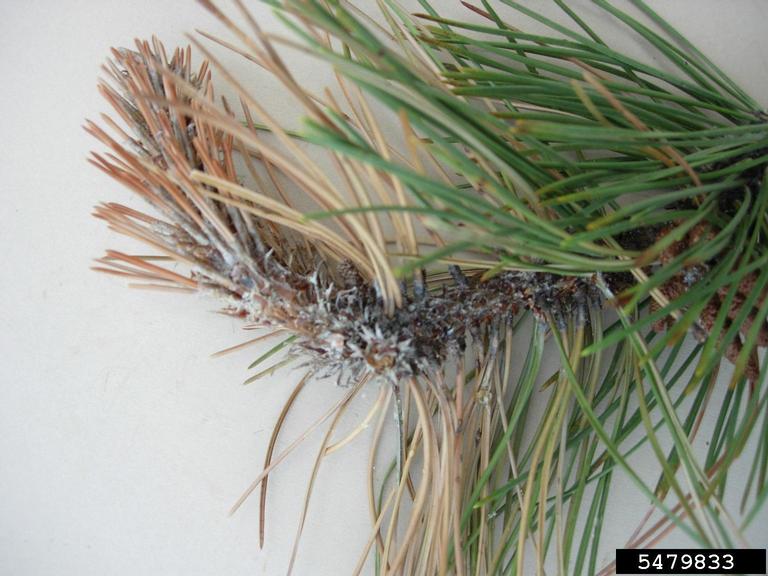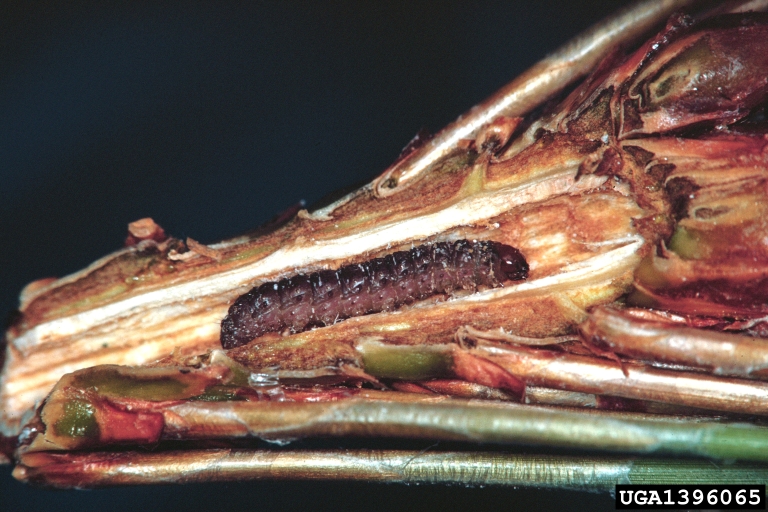By Todd Lanigan, DNR Forest Health Specialist, Eau Claire, Todd.Lanigan@wisconsin.gov or 715-210-0150
Scattered damage to new red pine shoots has been observed across many counties this summer. With the intermittent rains during the summer, the first thought was that Diplodia shoot blight, a fungal disease, was causing the damage. Upon a closer look, some of the shoot mortality is caused by the red pine shoot moth. From a casual glance, these two problems will look the same, so you really need to take a closer look.
If Diplodia causes the shoot mortality, the shoot usually forms a shepherd’s crook. And, in time, you will find the fungal fruiting bodies on the needles, especially if you look under the needle sheath (covering) at the base of the needles.

Shepherd’s crook caused by Diplodia shoot blight. Photo Credit: Elizabeth Bush, Virginia Polytechnic Institute and State University, Bugwood.org
The fruiting bodies will be black and they will be erupting out of the needle. Diplodia shoot blight will continue to grow down the branch, causing branch mortality and may also form a canker on the main trunk. If 50% or more of the red pine branches are infected with Diplodia, the tree will not recover and should be removed.
With red pine shoot moth, the dead shoot will not form a shepherd’s crook. If you break off the shoot, you may find a caterpillar or cocoon inside, or it may be hollow from the caterpillar’s feeding. If you look closely at the shoot, you may find an exit hole where the adult moth emerged. The exit hole usually has some pitch around it.

Hollowed-out shoot with caterpillar inside. Photo Credit: USDA Forest Service – Northeastern Area, USDA Forest Service, Bugwood.org
Red pine shoot moth only kills the current year’s shoot. Red pine will usually set a new bud behind the dead shoot, so you will get new shoot growth the following spring. If you get a couple of years of heavy shoot mortality from red pine shoot moth, it can reduce the tree’s growth rate, but natural predators should keep the population in check over time.
